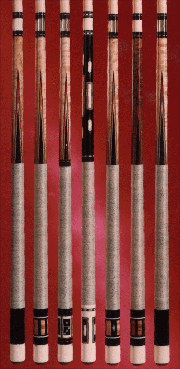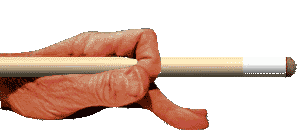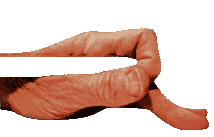 We moved Josswest to Tulsa Oklahoma in 1974. Aspen's long winters had become a little too long and I needed more room for the shop. I found a perfect location in southeast Tulsa. Barbara and I opened our new shop in the fall. She was doing most of the inlay work and the turning, and I was doing everything else.
We moved Josswest to Tulsa Oklahoma in 1974. Aspen's long winters had become a little too long and I needed more room for the shop. I found a perfect location in southeast Tulsa. Barbara and I opened our new shop in the fall. She was doing most of the inlay work and the turning, and I was doing everything else.
We decided to do our first brochure, just a postcard really, and found the perfect photographer. Bob Hawks knew how to shoot cues properly and really gave us good advice. The result, pictured here was very successful for us.
New equipment was a high priority, and after much searching, I selected two new lathes. One was a Centauro semiautomatic wood turning lathe and the other was a Clausing metal lathe. Combined with the equipment we brought from Aspen, we now had the right tools to really improve the Josswest cue.
One of the construction techniques I wanted to change was the way that points had been made up till then. I didn't like the old style v-groove point because it created a very weak area at the center of every cue. With the purchases of a Gorton pantagraph, I was finally able to correct this problem. Another innovation was the first use of a new type of finish - an automobile finish called Dupont Imron.
|
The first cue on the left was made for Buddy Hall.. The cue on the right had rectangle inlays surrounded by silver and was made for Jerry Wiley. All the designs were well received with the exception of the ninth cue from the left. The most popular design was the twelfth cue from the left. The price at that time was $450.00. The second cue from the right was mine. I played with this cue for many years and finally sold it to Joe Hardesty when I moved to Colorado Springs, CO. Tulsa had been good to us, but after a few years we decided to move again. |




 Two years later Bob shot another brochure photo for us. Most of the designs were new and some were made for players.
Two years later Bob shot another brochure photo for us. Most of the designs were new and some were made for players.
